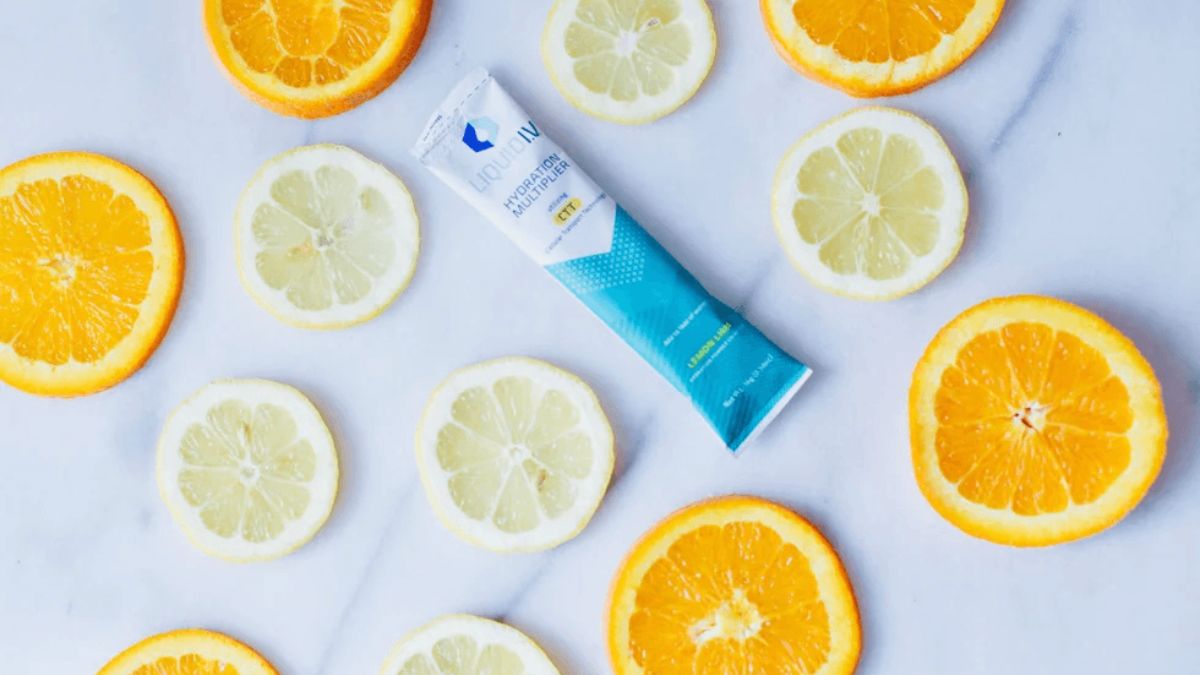Roller skating, with its blend of fun and fitness, might be on your list of activities. But is it safe to glide and twirl on wheels with a baby on board?
In this article, we’ll delve into the world of roller skating during pregnancy and provide guidance to help you make an informed decision.
Whether you’re a seasoned skater or a newbie, let’s roll into the facts together!
Roller Skating Risks for Pregnant Women
Falling and Trauma
One of the main risks associated with roller skating during pregnancy is the potential for falling and experiencing trauma.
While roller skating is generally considered safe during the first trimester, it becomes riskier as the pregnancy progresses.
As your belly grows, your center of gravity shifts, making it easier to lose balance and fall. Falling on your belly or back can be particularly dangerous for both you and the baby.
The extra weight of the baby can throw off your balance while roller skating, increasing the likelihood of falls.
Falling during the second and third trimesters can lead to complications such as premature labor, placental abruption, and fetal injury.
It’s crucial to prioritize the safety of yourself and your baby by avoiding activities that increase the risk of falling and trauma.
Muscle Pain and Fatigue
Roller skating is a physically demanding activity that engages various muscle groups, including the core, glutes, hamstrings, and adductor muscles.
While exercise is beneficial during pregnancy, it’s important to listen to your body and not overexert yourself.
Roller skating for extended periods can lead to muscle fatigue and pain due to anaerobic respiration and the accumulation of lactic acid.
Pregnant women may experience increased fatigue and muscle soreness, which the physical exertion of roller skating can exacerbate.
It’s crucial to balance staying active and avoiding excessive strain on your body.
Listening to your body’s signals and taking breaks when necessary will help prevent excessive muscle pain and fatigue.
Impact on Baby
The safety and well-being of your baby are of utmost importance during pregnancy.
Roller skating, particularly during the second and third trimesters, carries the risk of impact and trauma to the abdomen, which can potentially harm the baby.
The jarring movements and potential falls associated with roller skating can pose a threat to the developing fetus.
As your pregnancy progresses, it’s essential to prioritize activities that minimize the risk of impact and trauma to the abdomen.
While roller skating may be safe in the early stages of pregnancy, it’s advisable to avoid it as your belly grows and the risk of injury to the baby increases.
Precautions for Roller Skating When Pregnant
Roller Skating in the First Trimester
During the first trimester, roller skating is generally considered safe for pregnant women who have prior experience and are in good physical condition.
However, it’s crucial to listen to your body and take necessary precautions to ensure your safety and the well-being of your baby.
Here are some important precautions to consider when roller skating during the first trimester:
- Double-check with your healthcare provider: Before engaging in any physical activity during pregnancy, including roller skating, it’s essential to consult with your healthcare provider. They can assess your individual health and provide personalized recommendations based on your specific circumstances.
- Start slowly: If you’re an experienced roller skater, you can continue skating during the first trimester but at a reduced intensity. Take it easy and listen to your body’s signals. If you’re new to roller skating, it’s best to avoid starting during pregnancy and wait until after giving birth to ensure the safety of you and your baby.
- Wear protective gear: Always wear appropriate protective gear, including a helmet, knee pads, elbow pads, and wrist guards. These safety measures can help minimize the risk of injury in case of a fall.
- Choose safe skating environments: Select well-maintained roller rinks or smooth, flat surfaces for skating. Avoid areas with uneven terrain or potential hazards that could increase the risk of falling.
- Stay hydrated: Drink plenty of water before, during, and after skating to stay hydrated and prevent dehydration.
- Listen to your body: Pay attention to your body’s signals. If you experience any pain, dizziness, or discomfort while roller skating, stop and rest. It’s important to prioritize your well-being and the safety of your baby.
Roller Skating in the Second and Third Trimesters
As your pregnancy progresses into the second and third trimesters, it’s advisable to avoid roller skating due to the increased risks associated with falls and trauma to the abdomen.
Your growing belly alters your center of gravity, making it more challenging to maintain balance and increasing the likelihood of falls.
During these stages of pregnancy, it’s essential to prioritize activities that minimize the risk of impact and injury to the baby.
Engaging in low-impact exercises, such as walking or prenatal yoga, can provide the benefits of physical activity without the potential risks associated with roller skating.
Roller Skates for Pregnant Women
When it comes to roller skating during pregnancy, choosing the right equipment is crucial for safety and comfort.
Here are some key factors to consider when selecting roller skates for pregnant women:
- Size and fit: Ensure that the roller skates fit properly, providing adequate support and stability. Avoid skates that are too tight or too loose, as they can cause discomfort and increase the risk of falls.
- Ankle support: Look for roller skates with built-in ankle support to provide stability and prevent ankle injuries.
- Cushioning and shock absorption: Opt for roller skates with sufficient cushioning and shock absorption to minimize the impact on joints and reduce the risk of muscle fatigue.
- Quality and durability: Invest in high-quality roller skates that are designed to withstand regular use and provide long-lasting performance.
- Adjustability: Consider roller skates that offer adjustable features, such as laces or straps, to ensure a customized fit as your feet may swell during pregnancy.
Remember to consult with a knowledgeable salesperson or do thorough research before purchasing roller skates to ensure they meet your specific needs and requirements.
Related Post: How to Crack Your Back While Pregnant
Pregnancy-Friendly Roller Skating Techniques
If you’re an experienced roller skater and wish to continue skating during the first trimester, there are some pregnancy-friendly techniques you can adopt to minimize the risks and ensure a safe and enjoyable experience.
- Maintain a moderate pace: Avoid skating at high speeds to reduce the risk of falls and impact. Maintain a comfortable and moderate pace that allows you to maintain control and balance.
- Focus on balance exercises: Incorporate balance exercises into your skating routine to improve stability and minimize the risk of falls. Practice standing on one leg or shifting your weight from side to side while skating.
- Avoid jumps and tricks: Refrain from performing jumps, spins, or any tricks that involve sudden movements or excessive impact. These maneuvers can increase the risk of falls and trauma to the abdomen.
- Listen to your body: Pay attention to any signs of fatigue, discomfort, or dizziness. If you experience any of these symptoms, take a break, rest, and hydrate.
Remember, the health and safety of you and your baby should always be the top priority.
If at any point you feel uncertain or uncomfortable, it’s best to consult with your healthcare provider and consider alternative forms of exercise.
Roller Skating Exercises for Expectant Moms
Engaging in regular exercise during pregnancy is beneficial for both the mother and the baby. Roller skating, when done safely and with caution, can be a fun and effective way to stay active.
Here are some roller skating exercises that are suitable for expectant moms:
- Gentle skating: Take a leisurely skate around a smooth and controlled environment. This low-impact exercise helps promote cardiovascular health and improves circulation.
- Balancing drills: Practice balancing exercises while skating, such as gliding on one leg or shifting your weight from side to side. These exercises help improve balance and stability, which can be beneficial during pregnancy.
- Forward and backward skating: Alternate between forward and backward skating to engage different muscle groups and improve overall strength and coordination.
- Sideways movements: Incorporate sideways movements into your skating routine to activate the muscles in your hips and thighs. This can help alleviate hip pain and improve flexibility.
- Stretching: Dedicate some time to stretching before and after your skating sessions. Focus on stretching the muscles in your legs, hips, and lower back to prevent tightness and discomfort.
Remember to listen to your body and adjust the intensity and duration of your roller skating exercises as needed.
If you experience any pain, dizziness, or shortness of breath, stop skating and consult with your healthcare provider.
Roller Rinks: Are They Safe for Pregnancy?
When considering roller skating during pregnancy, the choice of venue plays a crucial role in ensuring safety.
Roller rinks, specifically designed for skating, often provide a controlled environment with smooth surfaces and dedicated spaces for skaters of all levels.
These rinks generally have safety measures in place, such as proper lighting, well-maintained surfaces, and rules to prevent collisions.
Choosing a reputable roller rink that prioritizes safety and adheres to safety guidelines can provide a safer environment for pregnant women who wish to continue skating.
However, it’s essential to exercise caution, follow the rules and regulations of the rink, and always wear appropriate protective gear to minimize the risk of injury.
Before visiting a roller rink, it’s advisable to contact them in advance and inquire about their policies regarding pregnant skaters.
Some rinks may have specific guidelines or restrictions in place to ensure the safety of expectant mothers.
Protective Gear for Pregnant Roller Skaters
When roller skating during pregnancy, it’s crucial to prioritize safety by wearing appropriate protective gear. The following protective gear is recommended for pregnant roller skaters:
- Helmet: Protect your head from potential impacts and falls by wearing a properly fitted helmet designed for roller skating or skateboarding.
- Knee and elbow pads: Shield your knees and elbows from injuries by wearing well-padded knee and elbow pads. These pads provide cushioning and protection in case of falls or collisions.
- Wrist guards: Wrist guards can help prevent wrist injuries and fractures by providing support and stability to the wrists. They are particularly important for pregnant women, as hormonal changes during pregnancy can affect joint strength.
- Hip pad: A hip pad can provide extra protection to your pelvic area and hips, minimizing the risk of injury in case of falls.
- Comfortable clothing: Wear loose-fitting and comfortable clothing that allows ease of movement. Avoid wearing tight or restrictive clothing that may restrict blood flow or cause discomfort.
Remember to inspect your protective gear regularly to ensure it is in good condition and replace any damaged or worn-out gear.
Roller Skating Tips for Pregnant Women
Here are some additional tips to keep in mind when roller skating during pregnancy:
- Stay hydrated: Drink plenty of water before, during, and after your skating sessions to stay hydrated and prevent dehydration.
- Take breaks: Listen to your body and take breaks when needed. If you feel fatigued, dizzy, or short of breath, rest and recover before continuing.
- Skate with a buddy: It’s always a good idea to skate with a friend or have someone nearby who can provide assistance and support if needed.
- Avoid crowded areas: Choose less crowded times and locations for roller skating to reduce the risk of collisions and falls.
- Modify your routine: As your pregnancy progresses, you may need to modify your skating routine to accommodate your changing body. Slow down, reduce intensity, and focus on low-impact movements.
- Listen to your healthcare provider: Always consult with your healthcare provider before engaging in any physical activity during pregnancy. They can provide personalized advice based on your specific health condition.
Remember, every pregnancy is unique, and what works for one expectant mother may not work for another.
It’s essential to prioritize your health and safety, listen to your body, and make informed decisions about engaging in roller skating during pregnancy.
Wrapping it Up
Roller skating can be a fun and enjoyable activity, but it’s important to consider the potential risks and take necessary precautions when engaging in this activity during pregnancy.
While roller skating may be safe during the first trimester for experienced skaters, it becomes riskier as the pregnancy progresses.
Falling, trauma, muscle pain, and impacts on the baby are all potential risks associated with roller skating during pregnancy.
It’s crucial to prioritize the well-being of both the mother and the baby by avoiding activities that increase the risk of falls and injury.
If you decide to roller skate during pregnancy, remember to wear appropriate protective gear, choose safe skating environments, and listen to your body’s signals.







